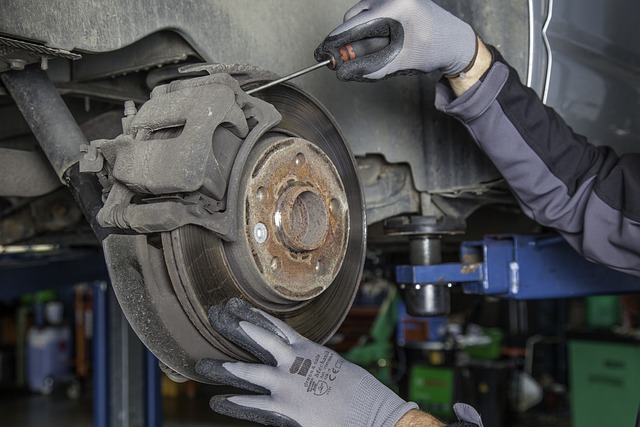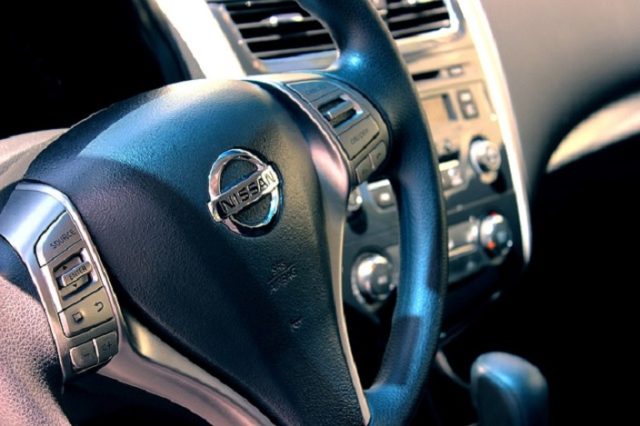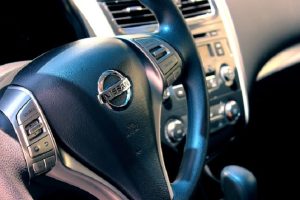Brake System Maintenance in vehicle: Unveiling 9 Secrets To Effective Brake System
Brake System Maintenance in vehicle: Welcome to the world of automobile care, where every component plays a crucial role in ensuring the safety and performance of your vehicle. neglecting Brake System Maintenance in vehicle is a risk not worth taking. As someone with extensive experience in automobile engineering, I can’t stress enough how crucial it is to prioritize the upkeep of your brake system. From ensuring your safety and that of others on the road to optimizing your vehicle’s performance, regular maintenance is a responsibility that comes with being a responsible vehicle owner.
In this guide, we’ll delve into one of the most vital aspects of automobile maintenance: the brake system. As an experienced automobile engineer, I am here to emphasize the significance of proper brake system maintenance and shed light on how it directly impacts your vehicle’s safety and overall performance.
Importance Brake System Maintenance in vehicle
Picture this: you’re cruising down the highway when suddenly, you encounter an obstacle that demands quick action. Your brake system is your vehicle’s first line of defense in such situations. Regular brake system maintenance isn’t just a routine chore; it’s a critical responsibility that can save lives.
- Safety First: Your brakes are not just about stopping your vehicle; they are about keeping you, your passengers, and others on the road safe. A well-maintained brake system ensures precise stopping power, reducing the risk of accidents and collisions.
- Longevity: Regular maintenance prevents premature wear and tear of brake components. This means you’ll avoid costly repairs and replacements down the line. Think of it as an investment in your vehicle’s future.
- Consistent Performance: Have you ever experienced a spongy brake pedal or a pulsating sensation while braking? These issues can be addressed through proper maintenance, ensuring a smooth and consistent braking experience every time you hit the pedal.
B. Impact on Vehicle Safety and Performance
- Enhanced Control: Imagine navigating winding roads or slippery surfaces with a compromised brake system. Properly maintained brakes offer you the control you need in challenging driving conditions. This control extends beyond stopping; it also includes handling and maneuvering.
- Optimized Performance: Your vehicle’s overall performance is closely tied to its ability to decelerate effectively. A neglected brake system can lead to reduced acceleration efficiency, as the energy that could have been utilized for propulsion is wasted due to inefficient braking.
- System Synergy: An automobile is a symphony of interconnected components. The brake system works in harmony with other systems like the suspension and tires. If the brakes aren’t functioning optimally, it can negatively impact the performance of these interdependent systems.
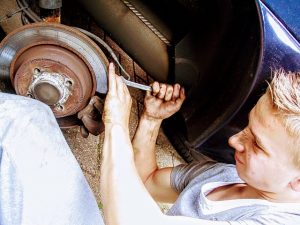
Understanding the Brake System: Decoding the Heart of Your Vehicle’s Safety
When it comes to ensuring the safety of your vehicle and those on the road, the brake system stands as a paramount component. As someone deeply rooted in the realm of automobile engineering, I’m here to guide you through the intricate yet crucial aspects of the brake system. From its components to the underlying principles, let’s delve into this fundamental system that keeps us safe on every journey. A. Components of a Typical Brake System: Piecing Together Precision
- Brake Pads and Shoes: Imagine your brake system as a finely tuned orchestra, and the brake pads and shoes are the virtuoso performers. These friction materials are vital as they press against the rotors or drums to create the stopping force. Crafted with high-density materials, they endure immense heat and pressure, ensuring a reliable performance with every brake application.
- Rotors and Drums: Picture the brake rotors and drums as the stage on which the brake pads and shoes perform. The rotors, often disc-shaped, and drums, typically found in the rear brakes of older vehicles, provide a surface for the pads and shoes to grip onto. Their smooth, even surfaces are essential for consistent braking performance.
- Calipers and Pistons: In the symphony of braking, calipers and pistons are the conductors. When you apply the brakes, hydraulic pressure is generated, causing the pistons within the calipers to press the brake pads against the rotors. This friction is what ultimately slows down and halts your vehicle.
- Brake Lines and Hoses: Think of brake lines and hoses as the intricate network of veins and arteries, transporting the hydraulic fluid to the calipers. Made of durable materials, these lines ensure the transmission of hydraulic pressure without compromise, guaranteeing a responsive braking action.
- Brake Fluid Reservoir: The brake fluid reservoir takes on the role of a reservoir keeper. It stores the hydraulic fluid, acting as a buffer against air entering the brake lines. Regularly checking and maintaining the fluid level in the reservoir is crucial for consistent brake performance.
B. How the Brake System Works: The Science of Halting Motion
- Hydraulic Principles: Now, let’s dive into the mechanics. When you press the brake pedal, a series of events unfold. This pedal pressure is transmitted to the master cylinder, which is the central hub of hydraulic magic. The master cylinder sends pressurized brake fluid through the brake lines to the calipers. The pistons in the calipers, upon receiving this hydraulic force, squeeze the brake pads against the rotors. This pressure converts your foot’s command into a formidable stopping force.
- Conversion of Kinetic Energy to Heat: As your vehicle hurtles down the road, it possesses kinetic energy – the energy of motion. When the brakes are engaged, this kinetic energy is converted into heat energy due to the friction between the brake pads and rotors or drums. This thermal transformation is what slows down your vehicle. It’s a beautiful example of physics at work, where energy changes form to keep you safe.
Signs of Brake System Wear and Tear
As an experienced automobile engineer with a passion for ensuring vehicle safety, I’m here to share my expertise on recognizing the signs of brake system wear and tear. Your car’s braking system is crucial for your safety on the road, and being able to identify these signs can save you from potential accidents and costly repairs.
Squeaking, Squealing, or Grinding Noises One of the most common indicators of brake system deterioration is the presence of unusual noises. If you start to hear high-pitched squeaking or squealing sounds when applying the brakes, it’s likely a sign that your brake pads are worn out. This occurs because the wear indicator, a small metal tab, comes into contact with the brake rotor. If you ignore this sound, it could lead to a metal-on-metal scenario, resulting in costly rotor damage. Addressing this issue promptly can help you avoid extensive repairs.
Reduced Braking Responsiveness Experiencing a decrease in braking responsiveness can be alarming. If you notice that you need to press the brake pedal harder or it feels spongy, it could indicate air in the brake lines or a brake fluid leak. Brake fluid plays a crucial role in transmitting the force from your foot to the brake components. Any inconsistency in this process can compromise your ability to stop quickly and safely. Seek professional assistance immediately to diagnose and rectify the issue.
Vibrations or Pulsations While Braking When you feel unusual vibrations or pulsations through the brake pedal while coming to a stop, it’s a sign of a warped brake rotor. Warping can occur due to intense heat generated during braking or sudden cooling, causing uneven surfaces on the rotor. This irregular surface disrupts the smooth interaction between the brake pads and rotor, leading to the vibrations you’re experiencing. Ignoring this issue not only affects your braking performance but also poses a risk to the overall stability of your vehicle.
Warning Lights on the Dashboard Modern vehicles are equipped with advanced sensors that monitor various systems, including the braking system. If you see a brake-related warning light illuminated on your dashboard, don’t ignore it. These lights are designed to alert you to potential issues, such as low brake fluid levels, ABS system problems, or even a malfunction in the electronic brake distribution. Get your vehicle inspected by a professional as soon as possible to prevent any further complications.
Uneven Wear on Brake Components Inspecting your brake components regularly can provide valuable insights into the condition of your braking system. If you notice that the brake pads are wearing unevenly or one side of the rotor has more wear than the other, it could indicate caliper issues or improper braking habits. Caliper problems can lead to uneven pressure on the brake pads, causing uneven wear. Additionally, aggressive braking habits can accelerate wear and tear. Address these concerns promptly to extend the lifespan of your braking system.
Routine Brake System Maintenance for Optimal Vehicle Performance
Maintaining your vehicle’s brake system is crucial not only for your safety but also for the overall performance and longevity of your automobile. Regular brake system maintenance ensures that your vehicle stops efficiently and maintains optimal handling. In this comprehensive guide, we’ll delve into expert-recommended routine brake system maintenance practices that will help keep your vehicle in top-notch condition. A. Regular Visual Inspections: Performing visual inspections at regular intervals allows you to catch potential brake issues before they escalate into costly problems. Here’s what you should look for:
- Checking Brake Pad Thickness: As an automobile enthusiast, you understand the significance of healthy brake pads. Inspect the thickness of the brake pads through the wheel spokes. If the pad material is nearing 1/8 inch or less, it’s time for a replacement. Worn-out brake pads can compromise braking efficiency and increase stopping distances.
- Examining Brake Fluid Levels: Brake fluid is the lifeblood of your braking system. Peer into the brake fluid reservoir and ensure it’s between the MIN and MAX markings. A drop in fluid levels might indicate a leak or worn-out brake components. Addressing this promptly can prevent air from entering the system and maintain consistent brake performance.
Brake Fluid Flush and Replacement:
Over time, brake fluid accumulates moisture and contaminants, affecting its performance. An occasional brake fluid flush and replacement are essential steps: Expert Tip: Aim for a brake fluid replacement every two years or as recommended in your vehicle’s manual.
Cleaning and Lubricating Brake Components:
Properly cleaned and lubricated brake components enhance the system’s efficiency and extend its lifespan. Here’s how you can do it:
- Gently remove the tires to access the brake components.
- Clean brake calipers, rotors, and pads using a brake cleaner to remove dirt and debris. A wire brush can be helpful for stubborn grime.
- Apply a thin layer of high-temperature brake grease to caliper slide pins and contact points. This minimizes friction and ensures smooth operation.
Tire Rotation and Brake Balance
Tire rotation and brake balance are often overlooked aspects of brake maintenance, yet they play a significant role in even brake pad wear and optimal system performance: Expert Tip: Schedule tire rotation and balance during routine oil changes or every 6,000 to 8,000 miles. Maintaining your vehicle’s brake system goes beyond ensuring safety; it’s about preserving the efficiency and agility of your automobile.
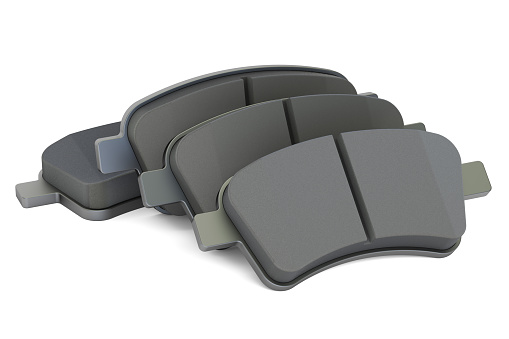
DIY Brake System Maintenance
When it comes to your vehicle’s safety, the brake system plays a critical role. Regular brake maintenance is essential to ensure your car stops efficiently and reliably. In this comprehensive guide, we’ll walk you through the steps of DIY brake system maintenance, from brake pad replacement to bleeding the brake system. As a seasoned automotive enthusiast with years of experience, I’m here to share my expertise and provide you with trustworthy insights. A. Tools Required for Basic Brake Maintenance: Proper tools are the foundation of any successful brake maintenance job. Here’s a list of essential tools you’ll need:
- Jack and jack stands: To safely lift and support your vehicle.
- Lug wrench: For removing the wheels.
- C-clamp or brake caliper tool: Used to compress the caliper piston when replacing brake pads.
- Wrench set: For loosening and tightening various brake components.
- Brake cleaner: To remove dirt, grime, and brake dust.
- Gloves and safety goggles: Protect yourself from debris and chemicals.
Step-by-Step Guide to Brake Pad Replacement:
Maintaining your brake pads is crucial for optimal braking performance. Follow these steps:
- Lift your vehicle: Use a jack and jack stands to lift and secure the car.
- Remove the wheel: Loosen the lug nuts, remove the wheel, and set it aside.
- Access the caliper: Locate the brake caliper, the component holding the brake pads and rotor.
- Remove the caliper: Unbolt the caliper and suspend it using a wire hanger to avoid stressing the brake line.
- Replace brake pads: Slide out the old brake pads, then use a C-clamp or caliper tool to retract the caliper piston. Install new brake pads.
- Reassemble: Put the caliper back, secure it with bolts, and reattach the wheel.
- Repeat for other wheels: Perform the same steps for each wheel.
Tips for Rotor/Drum Maintenance and Replacement
Maintaining rotors/drums ensures even braking and extends pad life. Consider these pointers:
- Inspect for wear: Check rotors/drums for scoring, grooves, or uneven wear. Replace if necessary.
- Clean the surface: Use brake cleaner and a wire brush to remove rust and debris from rotors/drums.
- Measure thickness: Ensure rotors/drums meet minimum thickness requirements. Replace if they’re too thin.
- Lubrication: Apply a thin coat of high-temperature grease on hub surfaces to prevent corrosion.
- Reassembly: Put everything back together carefully, following the reverse of disassembly steps.
D. Bleeding the Brake System: A How-To Guide: Brake bleeding removes air from the brake lines, maintaining optimal brake performance. Here’s how:
- Gather materials: You’ll need a helper, a clear plastic hose, a wrench, a container, and fresh brake fluid.
- Locate the bleeder valve: On each brake caliper or wheel cylinder, find the bleeder valve.
- Start with the furthest wheel: Begin at the wheel farthest from the master cylinder.
- Open the valve: Have your assistant press the brake pedal, then open the valve to release air and fluid. Close it before the pedal reaches the floor.
- Repeat and refill: Repeat the process for each wheel, ensuring the master cylinder doesn’t run dry.
- Test the pedal: Once all wheels are bled, test the brake pedal for firmness.
Taking care of your vehicle’s brake system is not only a matter of safety but also a rewarding experience. By following this expert guide to DIY brake maintenance, you’ll not only save money but also gain confidence in your ability to keep your car’s brakes in top-notch condition. Remember, proper brake maintenance is a testament to your commitment to safety and responsible car ownership.
Defensive Driving Practices to Reduce Brake Stress
When it comes to your vehicle’s safety, the brake system plays a crucial role. Proper care and maintenance of your brakes not only ensure your safety but also extend the lifespan of this essential component. In this comprehensive guide, we will delve into expert-backed techniques that will help you maintain a healthy brake system, ensuring smooth rides and peace of mind.
1. Maintain a Safe Following Distance:
Practicing a safe following distance allows you to anticipate traffic flow and react gradually, reducing the need for sudden, hard braking. This simple habit not only minimizes brake wear but also enhances overall road safety.
2. Anticipate Stops:
An experienced driver can predict traffic changes and stops ahead. By lifting your foot off the accelerator early and allowing the vehicle to decelerate naturally, you reduce the reliance on your brakes, preventing unnecessary strain.
3. Engine Braking Technique:
Downshifting in manual transmission vehicles or utilizing the engine braking feature in automatics helps slow down the vehicle without solely relying on the brake pedal. This technique is gentle on your brakes and contributes to their longevity.
B. Minimizing Sudden Stops and Heavy Braking
1. Smooth Braking:
Apply the brakes gradually and evenly, distributing the braking force across all wheels. This minimizes heat buildup and prevents excessive wear on any one brake component.
2. Brake in Advance:
Plan your stops ahead and start braking early. Gradual deceleration reduces the stress on your brake system, preventing unnecessary strain during abrupt stops.
3. Weight Distribution:
Avoid overloading your vehicle beyond its recommended capacity. Excessive weight increases the demand on your brakes, potentially leading to premature wear. Distribute cargo evenly to maintain proper balance.
C. Proper Parking Techniques to Avoid Brake Strain
1. Choose the Right Parking Spot:
Whenever possible, opt for flat, level surfaces for parking. Avoid hills or inclines that require constant brake engagement to prevent the vehicle from rolling.
2. Utilize the Parking Brake:
Engage the parking brake when parked, especially on inclines. This transfers the weight from the transmission to the brake system, reducing strain on both.
3. Regularly Exercise the Parking Brake:
Periodically engage and disengage the parking brake to prevent it from sticking or corroding. Consult your vehicle’s manual for proper usage instructions. By implementing these expert-recommended practices, you’ll not only enhance your driving skills but also extend the lifespan of your brake system. Remember, a well-maintained brake system contributes to overall road safety, ensures optimal vehicle performance, and saves you from costly repairs. Prioritize brake care, and enjoy the benefits of a smooth and secure driving experience for years to come.

Upgrading Your Brake System
When it comes to maximizing your vehicle’s performance and ensuring your safety on the road, upgrading your brake system is an essential consideration. we’ll delve into the world of high-performance brake options, the advantages and disadvantages of upgraded brake pads and rotors, and the importance of seeking expert consultation before making any upgrades. Whether you’re a seasoned gearhead or a car enthusiast, this article will provide you with valuable insights to make informed decisions about enhancing your vehicle’s brake system.
High-performance brake options
Elevate Your Driving Experience When seeking to upgrade your brake system, high-performance brake options are a tempting choice for enthusiasts seeking better stopping power and heat dissipation. These brake systems are designed to handle more rigorous driving conditions, making them ideal for spirited driving, track days, or towing heavy loads. Here are some popular high-performance brake options to consider:
- Big Brake Kits: Subheading: Unleash Deceleration Dominance Big brake kits consist of larger rotors and calipers, offering enhanced stopping power and heat dissipation. This upgrade is particularly beneficial for vehicles with increased horsepower or those used for towing.
- Carbon Ceramic Brakes: Subheading: The Pinnacle of Performance Braking Carbon ceramic brakes provide exceptional stopping power while significantly reducing brake fade and weight. They are often found in high-end sports cars and offer a longer lifespan compared to traditional brake components.
- Performance Brake Pads: Subheading: Grip and Control Redefined Upgrading to performance brake pads improves friction and heat resistance, resulting in better braking performance. These pads are available in various materials, each catering to specific driving needs.
Upgraded Brake Pads and Rotors:
Pros and Cons Before diving into brake system upgrades, it’s important to weigh the pros and cons of upgrading brake pads and rotors:
- Upgraded Brake Pads: Subheading: Enhancing Braking Efficiency Pros:
- Improved stopping power and shorter braking distances.
- Better performance under high-temperature conditions.
- Reduced brake fade for consistent performance.
Cons:
- Potential increase in brake noise and dust.
- Slightly higher cost compared to standard brake pads.
- Upgraded Brake Rotors: Subheading: Heat Dissipation and Durability Pros:
- Enhanced heat dissipation and reduced risk of brake fade.
- Increased rotor lifespan for prolonged performance.
- Compatibility with various brake pad materials.
Cons:
- May produce more noise, especially when paired with certain brake pads.
- Initial cost investment might be higher.
Consultation with Experts Before Upgrading:
Making Informed Decisions Subheading: Steering Your Brake Upgrade Journey Before embarking on a brake system upgrade, consulting with experts in the field is crucial. Engaging with professionals who possess experience and knowledge in automobile engineering will help you make well-informed decisions tailored to your driving style and vehicle specifications.
- Seek Guidance from Auto Shops and Mechanics: Experts in automotive care can assess your vehicle’s specific needs and recommend suitable brake upgrades based on factors such as driving habits, vehicle weight, and intended usage.
- Research and Gather Information: Subheading: Knowledge Empowers Decisions Prioritize research by delving into online forums, manufacturer websites, and reputable automotive publications. This will empower you with valuable insights and enable you to ask informed questions during consultations.
- Consider Manufacturer Recommendations: Subheading: Tapping into Manufacturer Wisdom Vehicle manufacturers often provide guidelines on compatible brake upgrades. Adhering to these recommendations can help maintain the vehicle’s intended performance and safety standards.

FAQS On Brake System Maintenance in vehicle
1. Why is Brake Maintenance Important?
Maintaining your brake system is crucial for your safety and the safety of others on the road. A well-maintained brake system ensures effective stopping power, reduces the risk of accidents, and prevents costly repairs in the long run.
2. How Often Should I Inspect My Brakes?
Regular brake inspections are recommended at least every 6 months or every 6,000 to 10,000 miles, depending on your driving habits. If you notice any unusual noises or changes in braking performance, have your brakes inspected immediately.
3. What are the Signs of Brake Problems?
Look out for warning signs such as squeaking or grinding noises, vibrations while braking, a soft brake pedal, or an illuminated brake warning light on your dashboard. These indicators suggest potential issues with your brake system that require immediate attention.
4. Can I Check My Brakes Myself?
While a basic visual inspection is possible, it’s advisable to have a professional mechanic inspect your brakes thoroughly. They have the expertise to identify hidden problems and recommend the appropriate actions.
5. What Does Brake Fluid Do?
Brake fluid is essential for transferring the force from your foot on the brake pedal to the brake components. Over time, brake fluid absorbs moisture and becomes less effective, so regular fluid flushes (every 2 years) are essential to maintain optimal braking performance.
6. How Can I Extend the Life of My Brakes?
Practicing good driving habits, such as avoiding sudden stops and not riding the brakes downhill, can help extend the life of your brakes. Additionally, having your brakes serviced at recommended intervals prevents excessive wear.
7. Are There Different Types of Brake Systems?
Yes, vehicles can have different types of brake systems, including disc brakes and drum brakes. Many modern vehicles use disc brakes on the front wheels for better performance. Regular maintenance for both types is crucial.
8. When Should I Replace My Brake Pads?
Brake pads should typically be replaced when they have about 3mm of friction material left. However, this can vary based on driving conditions. Regular inspections will help you determine the right time for replacement.
9. Can I Drive with Worn Brake Pads?
Driving with worn brake pads is dangerous and can lead to decreased braking efficiency, longer stopping distances, and potential damage to other brake components. Replace worn brake pads immediately.
10. How Do I Choose the Right Brake Repair Shop?
Look for certified and reputable mechanics or auto repair shops with experience in brake system maintenance. Check online reviews, ask for recommendations, and ensure the shop uses quality brake components. In conclusion, brake system maintenance is a critical aspect of vehicle care that directly impacts your safety and the performance of your vehicle. Regular inspections, prompt repairs, and proper driving habits will ensure your brakes function optimally. If you notice any issues or have concerns, don’t hesitate to consult a professional mechanic for expert guidance. Stay safe on the road!
